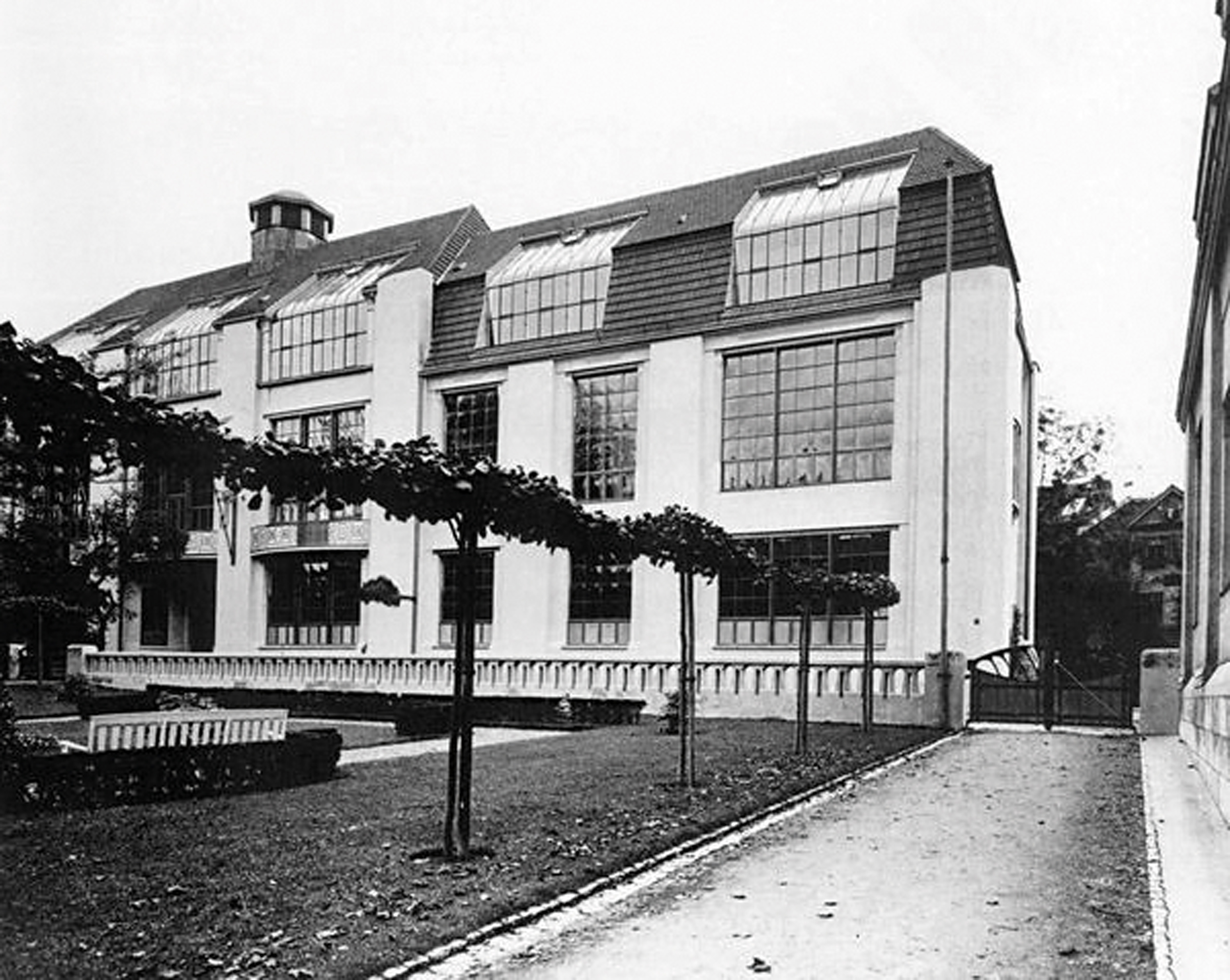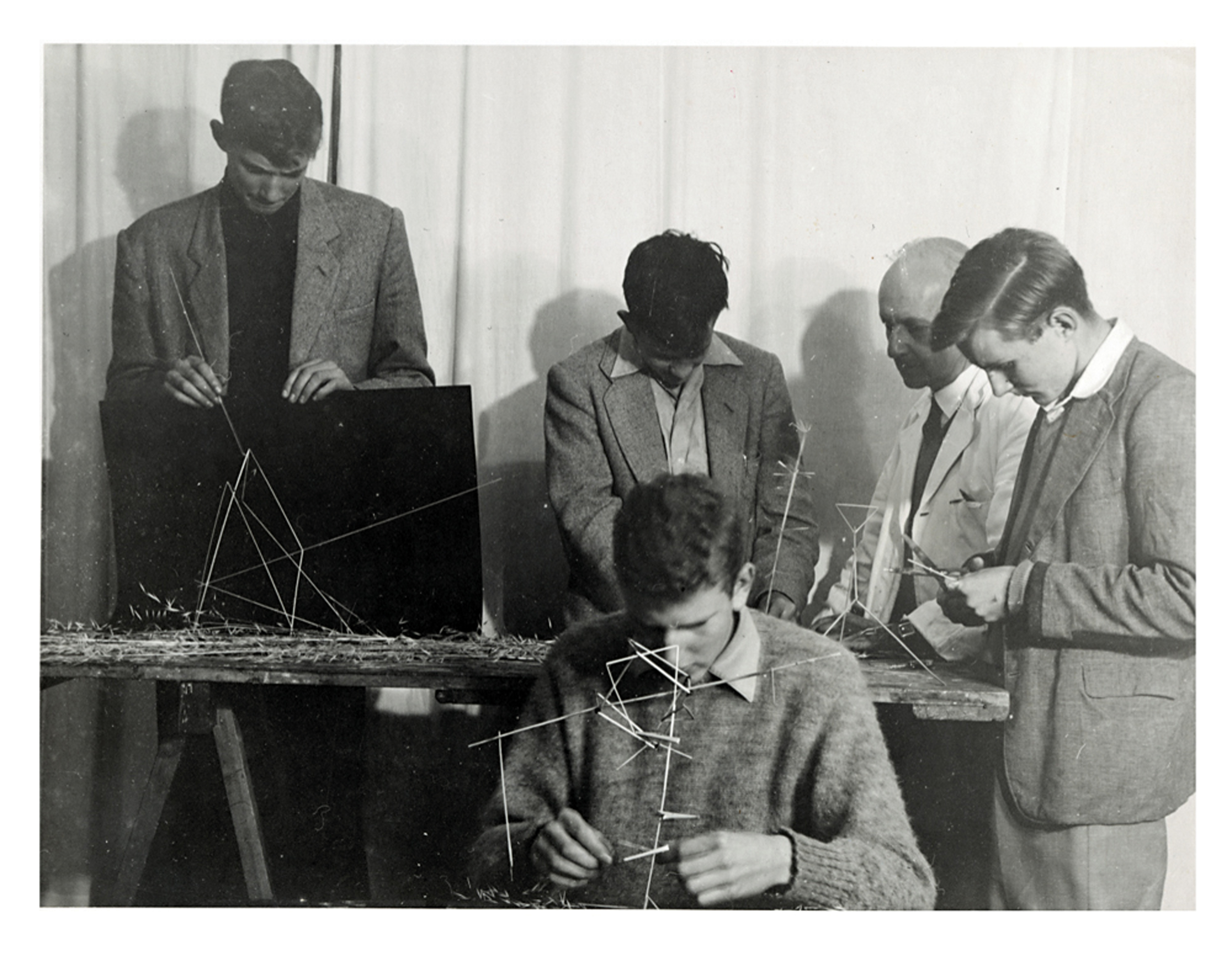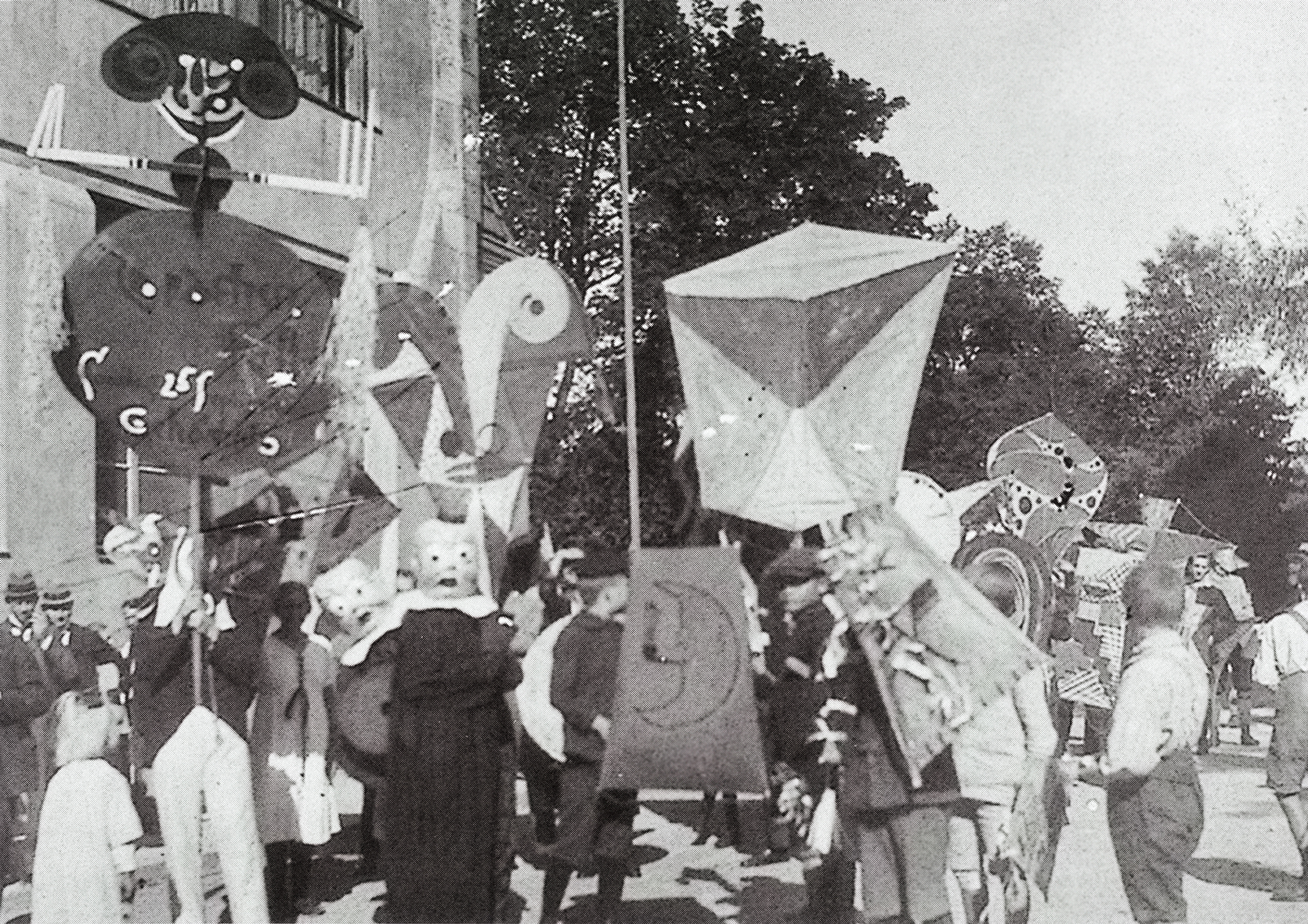D+H ONLINE: Ludwig Hirschfeld-Mack + Bauhaus Artists
Bauhaus School of Art in Weimar

The arrival of Ludwig Hirschfeld-Mack in Australia in 1940 established a direct tangible link between avant-garde European modernism and twentieth century Australian art. Interned in England, where he had sought refuge from the rise of Nazism in Germany, Hirschfeld-Mack was one of more than two and half thousand men deported to Australia on board the HMT Dunera. Many of the ship’s passengers were highly educated, skilled professionals who went on to make significant contributions to the cultural, economic and social life of their new country. In the creative fields of art and design alone, the ‘Dunera Boys’ included the photographer Henry Talbot, the sculptor Erwin Fabian, and Fred Lowen and Ernst Rodeck, founders of FLER furniture.
Hirschfeld-Mack was one of the most well-trained artists on the Dunera. His studies began in 1913 when, with the support of a monthly allowance from his father, he enrolled at the Debschitz School in Munich, while undertaking compulsory military training.1 Progressive in its approach, the school welcomed female students (including Hirschfeld-Mack’s sister, Emmy, who established a career in costume design) and staff, and encouraged the application of the visual and applied arts to everyday life.2 This approach aligned with the philosophy of the Bauhaus, where Hirschfeld-Mack continued his studies between 1919 – 25. Founded by architect Walter Gropius in Weimar in 1919, the Bauhaus counted among its teachers some of the most innovative and influential artists of the time, including Paul Klee, Josef Albers, Wassily Kandinsky and Oskar Schlemmer. Reflecting the idealism and desire for a better world which was shared by so many following the devastating experience of the First World War, the school’s manifesto proposed a radical challenge: ‘Let us create a new guild of craftsmen, without the class distinctions which raise an arrogant barrier between craftsman and artist. Together let us conceive and create the new building of the future, which can embrace architecture and sculpture and painting in one unity.’3
Hirschfeld-Mack Geelong Grammar

construction (material studies) with Hirschfeld
Recognising the danger and volatility of the political situation in Europe, Gropius had moved to the United States in 1937. Holding Hirschfeld-Mack in high esteem, he encouraged him to do the same, recommending him for a teaching position in Boston and when this fell through, promising to help him find employment. In early 1940, Hirschfeld-Mack’s immigration to America seemed certain with the firm offer of a job at Black Mountain College, North Carolina. However, plans were derailed once again when he was interned as an ‘enemy alien’ following the fall of France in May 1940, as a result of the escalation of suspicion and distrust of Germans and Austrians living in England, even if, like Hirschfeld-Mack, they had Jewish heritage. Finally arriving in Sydney Harbour in early September 1940, he was transported to an internment camp at Hay, about 600 kilometres west of Sydney, writing to his daughter that there were ‘a lot of kangaroos… hopping in great speed alongside the train… also wonderful coloured parrots making terrific noise.’4 After nine months, he was briefly transferred to another camp in Orange, New South Wales, and then in mid-1941, to Tatura, in central Victoria where other internees included the now world-famous fashion photographer, Helmut Newton.
Following the intervention of a friend who recognised Hirschfeld-Mack’s skills and experience as an artist and teacher, he was released in 1942 to take up the role of art master at Geelong Grammar. The headmaster, James Darling, found the artist ‘both indispensable and irreplaceable’ and his approach to teaching, which echoed the Bauhaus practice of combining practical trade-based crafts and fine art, also engaged the students.5 The eminent curator and art-historian, Daniel Thomas AM, recalls being electrified upon learning that his art teacher had worked with Paul Klee and Wassily Kandinsky, explaining that, ‘to see the stylistic connection between Klee’s art, illustrated in books, and Hirschfeld-Mack’s own framed watercolour hanging by the door to his flat was a first flash of art history, of the flow of forms and ideas through time and place.’6
Bauhaus-Artists-Kit-festival-image.jpg

A kite festival in Weimar, 1922
Consigned by a descendant of Hirschfeld-Mack, this collection of prints offers a remarkable visual snapshot of a remarkable life. Dynamic studies of line, form and colour such as Der Mond Senkt (The Moon is Descending), 1922 (lot 7); Cylinder and Coneforms, 1922 (lot 8) and various monotypes and watercolours on paper executed from the 1940s – 1960s exemplify brilliantly the artist’s training at the Weimar Bauhaus and particularly, his interest in colour theory which remained a hallmark of his oeuvre. Meanwhile, woodcuts such as his iconic Desolation, Internment Camp, Orange, NSW, 1941 (lot 10) and Merry Christmas, 1941 (lot 11) provide a powerful record of the reality of daily life in Australian internment camps – with the Southern Cross a stark symbol of the internees’ dislocation and isolation. In addition to Hirschfeld-Mack’s own prints, the auction also includes works by three of the most renowned Bauhaus masters (as the school’s teachers were known) – Paul Klee, Lyonel Feininger and Lothar Schreyer. Highlighting the diversity and creative range of graphic arts within the Weimar Bauhaus, these vibrantly-coloured prints notably depict two of the annual celebrations which traditionally brought together members of the Bauhaus school and broader communities –the lantern festival featuring handmade lanterns which were carried through the streets at night (lots 1, 2 & 6) and the kite festival (or Drachenfest, see lots 4 – 6) during which, as Hirschfeld-Mack recalled, ‘we marched in procession through Weimar to the top of the hill with hundreds of school children.’7
1. For a detailed biographical account of Hirschfeld-Mack’s life, see Schwarzbauer, R. with Bell, C., Ludwig Hirschfeld-Mack: More Than a Bauhaus Artist, HistorySmiths, Melbourne, 2021
2. ibid., p. 23
3. ibid., pp. 36 – 37
4. Ludwig Hirschfeld-Mack to his daughter, Marga Bell, 19 September 1940, cited in Schwarzbauer, op. cit., p. 152
5. See Schwarzbauer, ibid., pp. 184 – 85
6. Daniel Thomas cited in Schwarzbauer, ibid., pp. 196 – 97
7. Ludwig Hirschfeld-Mack, cited in Stephen, A., ‘Bauhaus Now!’, Buxton Contemporary, Melbourne, 2019, p. 12